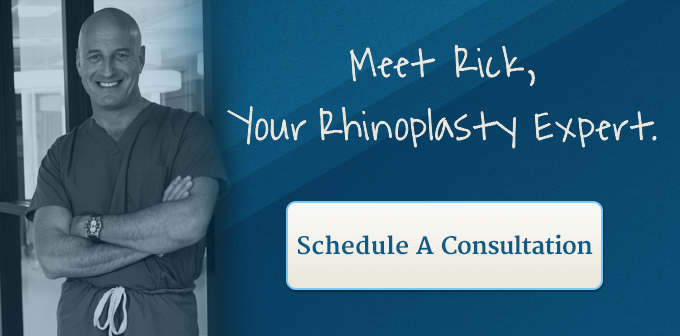Over the past few years I have seen my NJ practice transition heavily towards rhinoplasty. I attribute this to my peaked interest in noses, my working knowledge of nasal anatomy and my facility with all levels of rhinoplasty surgery. I suspect that many happy patients haven’t hurt either.
Over half of my busy rhinoplasty practice consists of non-primary nasal surgery.
A wise plastic surgery mentor of mine once told me: “It’s O.K. to want to do rhinoplasty, just stay away from redo’s.” This seems to be the credo that most surgeons who perform rhinoplasty practice by. Despite my reverence for him, I have embraced the opposite.
As I have become more expert in complex rhinoplasty techniques, it is rare that I see a patient for secondary/tertiary rhinoplasty that I cannot help. Furthermore, I find these cases to be incredibly rewarding while others are stressed thinking there is too little potential to make significant improvement.
Even though I enjoy redo rhinoplasty, I cannot help but feel badly when I see most of these patients at the initial consultation. When I’m taking note of various structural and aesthetic deficiencies and abnormalities, I imagine what each patient’s nose may have been like beforehand. Unless there is a significant problem with the soft tissue envelope and scarring, the vast majority of these patients are good candidates for revision rhinoplasty.
Rhinoplasty in My Practice
In my practice, all secondary rhinoplasties (and nearly all my primary rhinoplasties) are done via an open technique. This involves making an external incision across the bottom of the nose and joining it with internal incisions in the nostrils to provide me with unparalleled access to all of the nasal structural anatomy. Redo rhinoplasty presents a number of issues that are not part of a primary rhinoplasty:
- An often unhappy and hesitant patient.
- More difficult exposure secondary to scarring.
- Deficiencies of cartilage and/or nasal lining.
- A need for structural grafting.
- A need for an alternative cartilage source if the septum is not available (I typically use rib cartilage in my practice).
- Prolonged swelling.
- Less potential for outstanding results – depending on the circumstances.
Despite these obstacles I have found that redo rhinoplasty is almost always successful and rewarding for my patients.
A “Once in a Lifetime” Operation
Primary rhinoplasty in my practice always reminds me of what a privilege it is to have the opportunity to do the operation the first time. It is a privilege to be meticulous and accurate to ensure that it is the ‘once in a lifetime’ operation it was meant to be.
All rhinoplasty surgeries require a thorough evaluation, a detailed plan and perfect execution. If primary rhinoplasty in the community were as thoughtfully managed as redo rhinoplasty by experts, there would be many happier and less stressed rhinoplasty patients out there.


